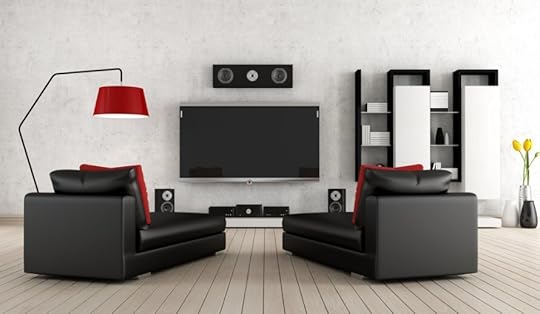How to Set Up Your Home Audio System

Creating a great audio experience at home is easier than you think. Whether you love music or want some background sound while cooking, setting up a home audio system can change how you enjoy music. Technology has come a long way, offering numerous options to meet every space and need.
Let’s look at how to add sound to your home.
Choosing Your Audio ComponentsFirst, decide what components you need. The main part of any home audio system is the receiver, which connects different audio sources to your speakers. Many modern receivers offer Bluetooth and streaming services, making them easy to use with various setups.
Next, think about the speakers. You can choose traditional wired speakers or modern wireless options. If you enjoy bass-heavy music, adding a subwoofer can improve the sound quality. Keep in mind the size and specifications of the speakers, as these will affect how sound travels and is heard. Make sure the speakers match your receiver and fit your room’s acoustics.
WiFi SpeakersWiFi speakers are an excellent choice for simplifying your home audio setup. They let you connect multiple speakers throughout your home without messy wires. With WiFi speakers, you can stream music directly from different services, giving you flexibility in how you enjoy sound. You can control your audio from your smartphone or smart home device, making it easy to listen anywhere.
Setting up WiFi speakers for home is simple. Most systems come with easy-to-use apps that help you through the installation. This technology not only tidies up your space but also lets you create different sound zones in your home. You can play different music in different rooms, which is perfect for hosting guests or having a quiet night.
For an even better experience, consider using WiFi speakers alongside traditional wired systems. This way, you can enjoy the strong sound of wired speakers and the convenience of wireless streaming.
Speaker PlacementProper speaker placement is key to getting the best sound quality. Begin by identifying your listening position, such as your couch or chair, and then arrange the speakers to form a triangle around it. The distance between the speakers and the height of the listener’s ears can affect sound clarity.
Also, consider speaker height. Floor-standing or bookshelf speakers should be at ear level for the best sound. Wall-mounted or satellite speakers should be high enough to direct sound toward you. Try different angles and distances to see what sounds best in your space.
Wiring and ConnectivityNow, think about wiring. For wired systems, use quality speaker cables for the best sound. Keep the wires neat and organized to avoid clutter. If you prefer a cleaner look, consider wireless options that don’t require a lot of wiring.
When connecting audio sources, check that they are compatible with your receiver. Most modern receivers support different types of connections, including HDMI, optical, and auxiliary inputs. If needed, label your cables to help you troubleshoot later.
Calibration and TuningAfter setting up your system, calibrate and tune it for the best sound. This step involves adjusting levels, equalizers, and using a sound calibration tool. Many receivers have automatic tools that check speaker placement and room acoustics, changing settings for you.
Take time to test various audio sources and music genres. This will help you understand how your setup performs with different sounds. Listen for bass response, vocal clarity, and stereo separation. Small adjustments can improve your sound quality, so don’t rush this part.
Taking Care of Your Audio SystemAfter setting up your audio system, it’s essential to maintain it to ensure it works well. Dust can collect on your speakers and other parts, so clean them with a microfiber cloth regularly. Don’t use harsh chemicals, as they can damage the finish of your equipment.
Check your wires and connections regularly to make sure they are secure and functioning properly. Loose cables can cause sound problems or harm your equipment over time. If you notice changes in sound quality, like distortion or lower volume, it might be time to repair or replace some parts.
Upgrading Your SetupAs your tastes change or new technology becomes available, consider upgrading your audio system. Start by evaluating what you already have. Upgrading your receiver can enhance your system’s features, giving you better streaming options and access to new audio formats.
Consider getting better speakers or a subwoofer for richer sound. If you currently use wired speakers, think about adding wireless ones for more flexibility. Many audio systems let you upgrade one piece at a time. Always do your research before upgrading to find the best options for your existing setup and sound preferences.
The post How to Set Up Your Home Audio System appeared first on Geek Mamas .



